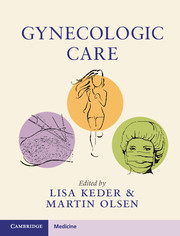Book contents
34 - Epithelial Ovarian, Fallopian Tube, and Primary Peritoneal Cancer
from Section 5 - Gynecologic Oncology
Published online by Cambridge University Press: 01 February 2018
Summary
Introduction
Every year, approximately 20,000 women are diagnosed with ovarian cancer. The majority of ovarian malignancies are epithelial in origin (90 percent) with the remainder arising from sex cord-stromal cells and germ cells. Epithelial ovarian cancer has several different histologic subtypes with serous carcinoma being the most common.
Epithelial ovarian cancers have several cell types: low-grade and high-grade serous, endometrioid, clear cell, mucinous, and transitional cell. There is mounting evidence that high-grade serous epithelial ovarian cancer and primary peritoneal carcinoma may originate from the fimbria of the fallopian tube. This was first suspected when pathologic examination of tubal segments from BRCA carriers undergoing risk-reducing surgery were found to have serous tubal intraepithelial carcinoma (STIC). STIC, which is considered a precursor of ovarian cancer, was noted in 1–5 percent of the women with BRCA mutations. Given the evidence of a likely single origin and similar clinical behavior, this chapter will refer to the collection of high-grade serous epithelial ovarian, fallopian tube, and primary peritoneal carcinoma collectively as epithelial ovarian cancer (EOC).
Scope of the Problem
EOC is the second most common gynecologic malignancy in women and the leading cause of gynecologic cancer death. The lifetime risk of developing ovarian cancer is 1 in 70 (1.4 percent). EOC is a devastating disease with presentation usually at late stage, especially in those women above the age of 65.
EOC rates differ between countries; Asian and African nations tend to have the lowest rates. This difference in incidence is not completely understood, but thought to be secondary to diet, age, reproductive patterns (family size), and race. Women who move from an area with a low incidence to a higher incidence have a similar risk of the area to which they moved rather than maintaining the low risk from their country of origin. This supports the theory of impact from environmental factors.
The five-year relative survival rate for ovarian cancer has improved from 37 percent to 45 percent over the past 30 years. After diagnosis, the probability of death secondary to EOC decreased over time. Despite this, EOC remains the leading cause of death for 7 years after a diagnosis of early stage disease and 16 years for advanced stages.
- Type
- Chapter
- Information
- Gynecologic Care , pp. 329 - 339Publisher: Cambridge University PressPrint publication year: 2018

